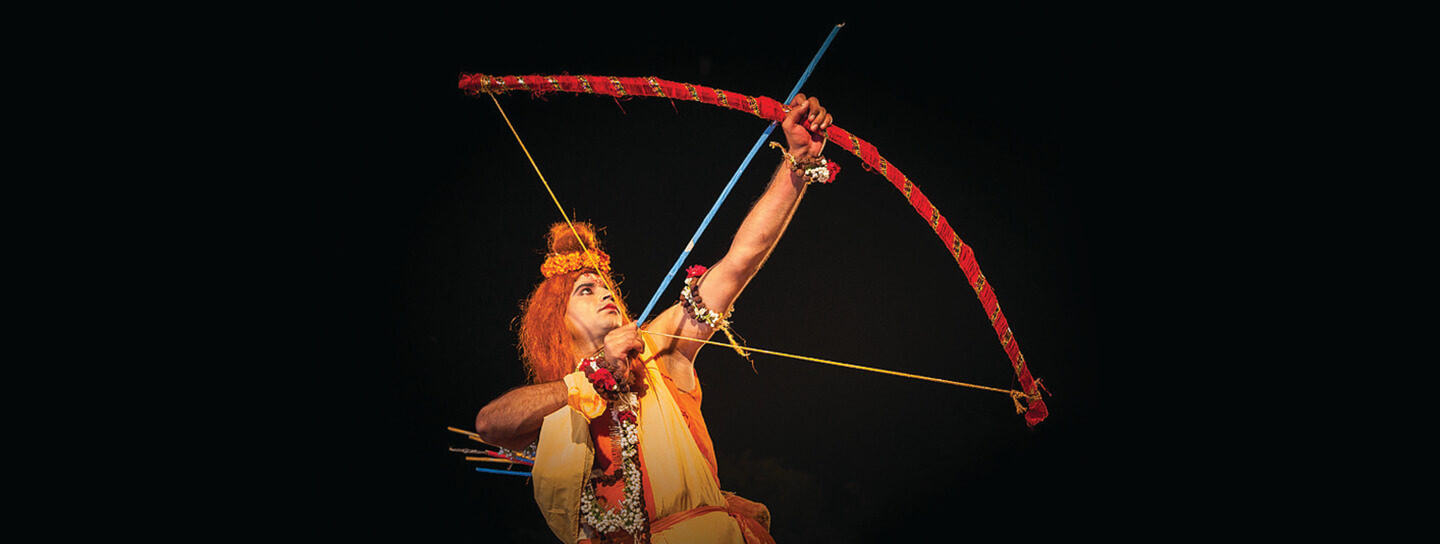He is called Maryada Purushottam, the perfect man who respects and upholds dharma, the rules of society. He proves this as a young prince and then as a king when he gives priority to his duties over his personal wishes.
Ramachandra, son of King Dasharath and Queen Kaushalya of Ayodhya remains the ideal for many Hindus. As mythologist Devdutt Pattanaik says, “Ram is life – with all its demands and desires and destinies. Ram’s calm repose in the face of all adversities, so evident in the Ramayana, has made him worthy of veneration, adoration and worship.”
The epic is said to be about duty and obedience. What is forgotten is that Ram’s life is also an inspiring tale of courage. It’s a theme that runs through his life from the time when he was fifteen and the sage Rishi Vishwamitra arrived at Dashrath’s court and made a very strange demand. He wanted Ram to come with him to fight the rakshasas who were disturbing the yagyas at his ashram in the forest.
Dashrath protested as Ram was just a teenager who had no experience of battle, offering to go himself but the rishi was adamant. So the two teenage boys Ram and Lakshman ventured out to face Taraka and her sons Marich and Subahu and defeated them. Ram did not like the idea of killing a woman and is said to have turned his head away when he shot the fatal arrow that killed Taraka.
Then a few years later when Dashrath wanted to perform the coronation of Ram, Queen Kaikeyi made her cruel demand and Ram was banished to the forest for fourteen years. Once again he bowed to the wishes of his elders and did not rebel against a truly unfair demand. It took courage to live in a forest where life could not have been easy for Ram, Sita and Lakshman, who had led the safe and luxurious life of royal children.
Reading the Ramayana one begins to realise the maturity of this young prince who accepts all the joys and adversities of life with a surprising detached serenity; a nearly super human calmness and grace. Also he is a gentle and humane person who does not believe in the caste system, his allies are vanars who are tribals and a rakshasa like Vibhishan.
His biggest challenge is when Ravan the rakshasa king of Lanka abducts Sita. He faces a very unequal battle against one of the most powerful kings with an army and all the wealth of Lanka. What does Ram have? Just the support of his brother Lakshman, Hanuman and the army of vanars, forest dwellers armed with rocks and tree branches. He doesn’t even know where Ravan has hidden Sita and has to organise a search for her.
By the time Ram arrives at Rameswaram there has been a transformation in his character. From a mere warrior he has become a general. He leads an army that is completely loyal to him. He has a council of advisors in Sugreev, Jambavan and Vibhishan. Most importantly he has the love and support of Lakshman and Hanuman. Ram at Rameswaram is now a leader of men.
Even then, sitting by the sea, praying to Samudra, the god of the oceans, Ram knew how hard it would be to reach Lanka and defeat Ravan. First they had to build a bridge over the tumultuous waters of the ocean and then armed with just rocks and tree trunks face soldiers on chariots, horses, elephants carrying swords, battle axes, bows and arrows. The rakshasas also had warriors like Ravan’s son Indrajit who knew magic and could become invisible while fighting.
At Rameswaram, where the famous Ramanathaswamy temple now stands by the sea, Ram worshipped Shiva and Durga and went off to face this epic battle. It is here that one can see the evolution of his character as he becomes Maryada Purushottam, the perfect and ideal king.
Researched by Daiwik Hotels.


